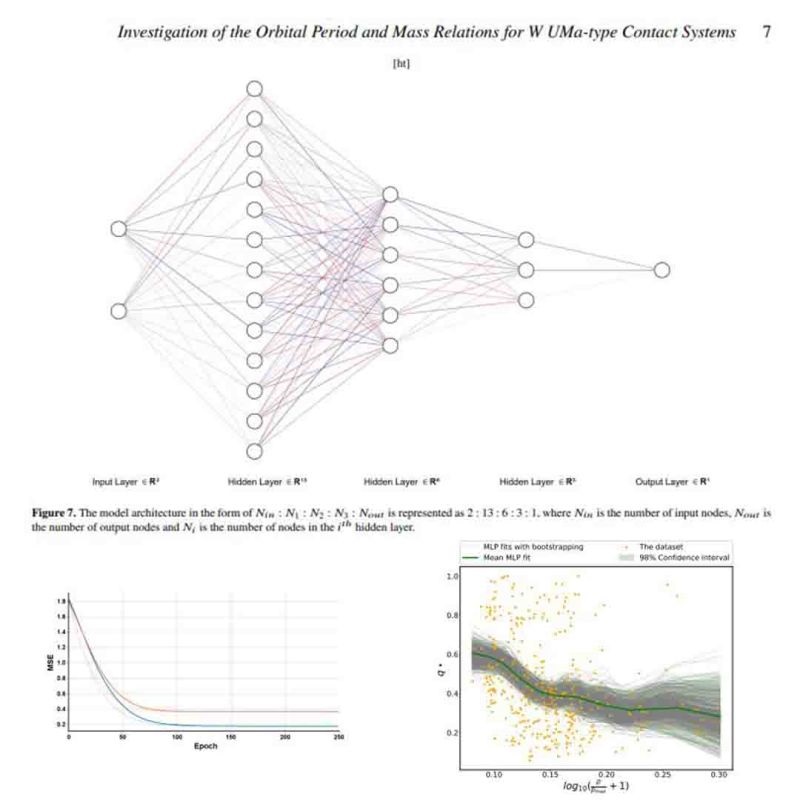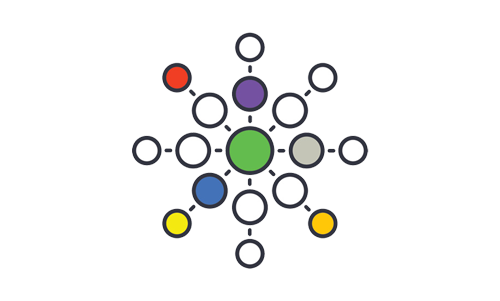RADERON AI LAB
Artificial Intelligence Laboratory
We seek to create new opportunities in various sciences with the help of AI achievements. We believe that many areas in multiple sciences remain untouched artificial intelligence techniques.
The dramatic advances in recent years in artificial intelligence have led to the emergence of various solutions to solve old problems in science.
Raderon Lab DATASTUDIO

At Raderon AI Lab,
We seek to create new opportunities in various sciences with the help of AI achievements.
We believe that many areas in multiple sciences remain untouched artificial intelligence techniques.
The dramatic advances in recent years in artificial intelligence have led to the emergence of various solutions to solve old problems in science.
At Raderon Artificial Intelligence Laboratory, we intend to expand the applications of artificial intelligence in multiple sciences.
To begin with, we have started working in the fields of astronomy, cognitive sciences, biocomputation, and finance. We believe that we can make a new difference in solving the challenges of the sciences.
 Computational
Computational Biology
 Fast
Fast Compututation
 High Frequency
High Frequency Calculations
 Financial
Financial Markets
 Artificial
Artificial Intelligence
 Computational
Computational Biology |
 Fast
Fast Compututation |
 High Frequency
High Frequency Calculations |
 Financial
Financial
|
 Artificial
Artificial Intelligence |
Blog | Our last news and publications

Machine learning and all its related methods and algorithms can change our view of the world of science
Machine learning and all its related methods and algorithms can change our view of the world of science. There are so many undiscovered areas in science that we have a lot of empirical data, but we still can't describe their relationships
More about this post All PostsPublications
- BSN: First Photometric Light Curve Analysis of Two W-Type Contact Binary Systems OP Boo and V0511 Cam Astrophysics 2024 DOI: 10.1007/s10511-024-09834-1
- BSN: The First Light Curve Analysis of the Total Eclipse Binary System EL Tuc Research in Astronomy and Astrophysics 2024 DOI: 10.1088/1674-4527/ad7793
- Estimating the absolute parameters of W UMa-type binary stars using Gaia DR3 parallax New Astronomy 2024 DOI: 10.1016/j.newast.2024.102227
- BSN: First Light Curve Study of the Low Mass Contact Binary V0610 Vir Astrophysics 2024 DOI: 10.1007/s10511-024-09823-4
- First Light Curve Analysis of NSVS 8294044, V1023 Her, and V1397 Her Contact Binary Systems Research in Astronomy and Astrophysics 2024 DOI: 10.1088/1674-4527/ad3a2c
- BSN: Photometric Light Curve Analysis of Two Contact Binary Systems LS Del and V997 Cyg Research in Astronomy and Astrophysics 2024 DOI: 10.1088/1674-4527/ad30b2
- Global Parameters of Eight W UMa-type Binary Systems Publications of the Astronomical Society of the Pacific 2024 DOI: 10.1088/1538-3873/ad1ed3
- Period–Luminosity Relationship for δ Scuti Stars Revisited Research in Astronomy and Astrophysics 2024 DOI: 10.1088/1674-4527/ad1b0f
- A new look at the YY CrB binary system New Astronomy 2024 DOI: 10.1016/j.newast.2023.102112
- Two-dimensional Parameter Relationships for W UMa-type Systems Revisited Research in Astronomy and Astrophysics 2024 DOI: 10.1088/1674-4527/ad0866
- The First Photometric Study of the Binary System CSS J003106.8+313347 Astrophysics 2023 DOI: 10.1007/s10511-024-09802-9
- Ephemeris Updates for Seven Selected Hatnet Survey Transiting Exoplanets Astrophysics 2023 DOI: 10.1007/s10511-023-09794-y
- Light Curve Analysis of the AP Dor Binary System using Ground-based and TESS Observations Research in Astronomy and Astrophysics 2023 DOI: 10.1088/1674-4527/ace027
- The First Multiband Photometric Light Curve Solutions of the V Gru Binary System from the Southern Hemisphere Research in Astronomy and Astrophysics 2023 DOI: 10.1088/1674-4527/acc506
- The Photometric Study of Six W UMa Systems and Investigation of the Mass–Radius Relations for Contact Binary Stars Publications of the Astronomical Society of the Pacific 2022 DOI: 10.1088/1538-3873/ac71cd
- The First Photometric Study of AH Mic Contact Binary System Research in Astronomy and Astrophysics 2022 DOI: 10.1088/1674-4527/ac6417
- Investigation of the orbital period and mass relations for W UMa-type contact systems Monthly Notices of the Royal Astronomical Society 2022 DOI: 10.1093/mnras/stab3775
- Refined System Ephemeris for Four Transiting Hot Jupiters using Ground-Based and TESS Observations Astronomy Letters 2021 DOI: 10.1134/S1063773721090024
- The First Light Curve Solutions and Period Study of BQ Ari Astronomy Letters 2021 DOI: 10.1134/S1063773721060050
- Study of Pluto’s atmosphere based on 2020 stellar occultation light curve results Astronomy & Astrophysics 2021 DOI: 10.1051/0004-6361/202141718
- BVRI Photometric Observations, Light Curve Solutions and Orbital Period Analysis of BF Pav Research in Astronomy and Astrophysics (RAA) 2021 DOI: 10.1088/1674-4527/21/8/203
- Observational and Theoretical Studies of 27 δ Scuti Stars with Investigation of the Period–Luminosity Relation Publications of the Astronomical Society of the Pacific 2021 DOI: 10.1088/1538-3873/ac12dc

Our Departments
Machine learning and all its related methods and algorithms can change our view of the world of science.
There are so many undiscovered areas in science that we have a lot of empirical data, but we still can't describe the relationships between them.
At Raderon AI Lab, we are trying to identify the applications of artificial intelligence and machine learning in science and develop tools that can uncover more unknowns.
We at the Raderon AI Lab Artificial Intelligence Laboratory departments are interested in applying artificial intelligence in various sectors of study and in addressing the complex challenges presented to us.
In each department, our professionals, university collaborators, and instructors collaborate to develop the most effective way of combining their fundamental department expertise utilizing artificial intelligence (AI).
All demands for artificial intelligence services from different departments will be gathered at our laboratory's technological hub and converted into specific services depending on the microstructure architecture.
 Artificial
Artificial Intelligence
 Astronomy
Astronomy
 Cognitive
Cognitive
 Financial
Financial
 Artificial
Artificial Intelligence |
 Astronomy
Astronomy
|
 Cognitive
Cognitive
|
 Financial
Financial
|
Our Vision
Combined with the power of computer processing, human ingenuity, perception based on experience, and the ability to learn from mistakes can result in a human-machine combination, which is vastly superior to either alone. The Raderon Artificial Intelligence Laboratory aims to support multidisciplinary fundamental scientific research and development to propel the community forward in new and exciting areas. The Raderon AI LAB brings together academic, business, government, and community partners to enhance key AI technologies, use them to maximize human-machine collaborations, and provide complementary tools and skills to tackle emerging global issues.

Our Team
It's always said, but it's true in our case: our team is what makes us successful.
Each of our professions is remarkable in its own right, but their combined efforts make RADERON AI LAB such an intelligent and gratifying place to work.
The RADERON AI LAB team is a close-knit, skilled group with the same goal of generating exceptional outcomes for our partners while ensuring our team is an inclusive, challenging environment to work in and create a fulfilling career.



